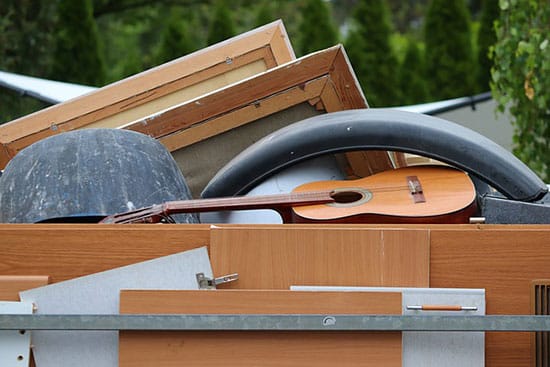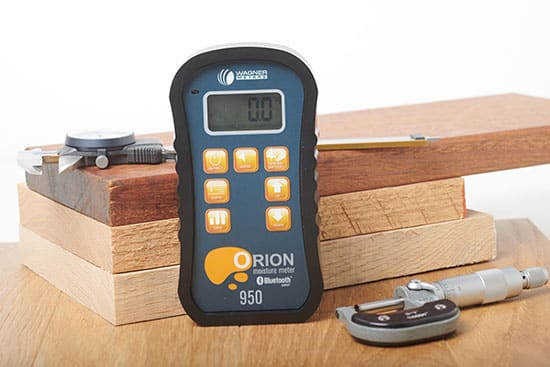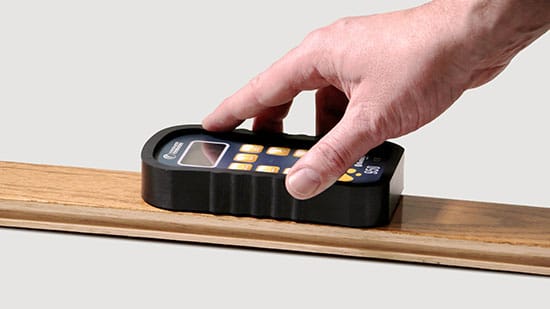Why Are Wood Moisture Meters So “Green?”
 More and more people today see value in “going green.” So, positioning yourself as green in the eyes of your customers and clients will inevitably give you a competitive advantage.
More and more people today see value in “going green.” So, positioning yourself as green in the eyes of your customers and clients will inevitably give you a competitive advantage.
You have many ways of going green. Let’s explore one, surprisingly easy way.
Use a wood moisture meter: It’s easy!
Did you know that perhaps your easiest way to position yourself as green is simply by using a wood moisture meter?
That’s right, wood moisture meters can be a simple yet essential element in your game plan for going green!
How? Let’s start by reminding ourselves about the most basic reason for using a wood moisture meter in the first place.
Wood is hygroscopic, meaning that it readily absorbs and releases moisture depending on the surrounding conditions. This causes the wood to either expand or contract, which can affect how the wood performs.
If you work with wood that’s too wet, you’ll likely end up with costly issues and repairs. For example: expect to see cabinets, drawers, furniture, or floorboards that no longer fit together correctly or that are subject to serious cracking, warping, or other unacceptable imperfections as the wood dries.
The use of an accurate wood moisture meter is critically important for avoiding these kinds of problems. Your meter—if it’s high-quality and engineered for accuracy—will give you a clear indication of your wood’s moisture content and whether it’s ready for your wood project.
By avoiding moisture-related problems, you are much more likely to get each project completed right the first time. No need to deal with repairing or replacing expensive kitchen cabinetry or an oak dining set or a beautiful hardwood floor.
Not only will this save you substantial time and money (and your reputation), but you will also conserve precious resources. You will minimize the waste of wood materials and the energy that went into producing or manufacturing those materials.
Be sure your moisture meter gives accurate readings
 Notice the caveat above. You can only be assured of avoiding problems and customer callbacks if you use a wood moisture meter that provides accurate moisture measurements.
Notice the caveat above. You can only be assured of avoiding problems and customer callbacks if you use a wood moisture meter that provides accurate moisture measurements.
We’ve seen reviews of inexpensive meters that are so inaccurate, that they’re only suitable for one thing: determining if firewood is sufficiently dry for burning in your fireplace.
Those kinds of meters are hardly appropriate when working on expensive projects. For instance, if you have a wood slab that you plan to transform into an attractive table for your client, you need to know if it is at or near your location’s target moisture content (known as equilibrium moisture content).
If you use an inexpensive, unreliable meter for your wood projects, then expect callbacks and unhappy customers. And don’t expect people to view you as a green woodworker or green flooring contractor because you won’t be conserving wood or saving energy.
Bottom line: why be unnecessarily wasteful in your woodworking practices if you can easily avoid that with a simple investment in a high-quality wood moisture meter? And why subject yourself to needless frustration and headaches?
Consider the various green connections
According to the U.S. Forest Service, “over 15 percent of all carbon dioxide emissions in the United States are sequestered by forests.” [1]
Interesting to think about—you decide to use a wood moisture meter so you can save time and money and create successful projects for your customers. And in the process, by cutting down on wood waste, you are likely playing a part, even if it’s a relatively small one, in reducing the amount of greenhouse gasses in the atmosphere.
Energy conservation is another key aspect of going green when you work with wood. Did you know that of all the materials used in building construction in the United States, wood requires the least amount of energy in its production? No other type of material even comes close.
Add to this the fact that when you use an accurate wood moisture meter, thereby cutting waste, you’re reducing even further the amount of energy required for each of your wood projects. It doesn’t matter whether you’re talking about a wood coffee table for the living room or a hardwood floor to grace the entryway of your client’s home.
By now, you can see that using a wood moisture meter is a simple way to go green in a surprising number of ways!
Choose the right type of moisture meter
 But with so many wood moisture meters to choose from, how do you pick the right one? Start by choosing between pin and pinless. For most applications, a pinless wood moisture meter will be the right choice.
But with so many wood moisture meters to choose from, how do you pick the right one? Start by choosing between pin and pinless. For most applications, a pinless wood moisture meter will be the right choice.
They’re extremely fast and simple to use, and because they don’t use pins, they don’t leave unsightly pinholes in the wood. In some applications, wood samples tested for moisture using a pin meter become throwaways because of those pinholes. Once again, that means unnecessary waste.
So going green almost always points to the use of a high-quality, accurate pinless meter.
Look for other ways to go green
It probably goes without saying, but when it comes to working with wood, going green entails a lot more than using a wood moisture meter.
If going green matters to you or your customers, you may want to purchase wood that’s been produced using sustainable practices. Look for wood that’s been green-certified by independent, third-party certification bodies such as the Forest Stewardship Council.
Another factor to consider is the type of wood finish. Generally speaking, water-borne finishes are a good choice when looking to reduce exposure to toxic chemicals. A water-borne finish is also the better choice for minimizing indoor air pollution.
Your course of action for “going green”
Going green is easier than you may think. Start by finding a trusted and accurate wood moisture meter. The award-winning Orion 950 Smart Pinless Wood Moisture Meter by Wagner Meters makes an excellent choice.
It’s one of 5 meters in Wagner’s line of Orion moisture meters. You can learn about all of the Orion meters here.
Remember, with the right meter, you’ll be saving time, money, energy, and even forests!
NOTES:
[1] USDA Forest Service. Forest Atlas. See: https://forest-atlas.fs.fed.us/future-introduction.html



